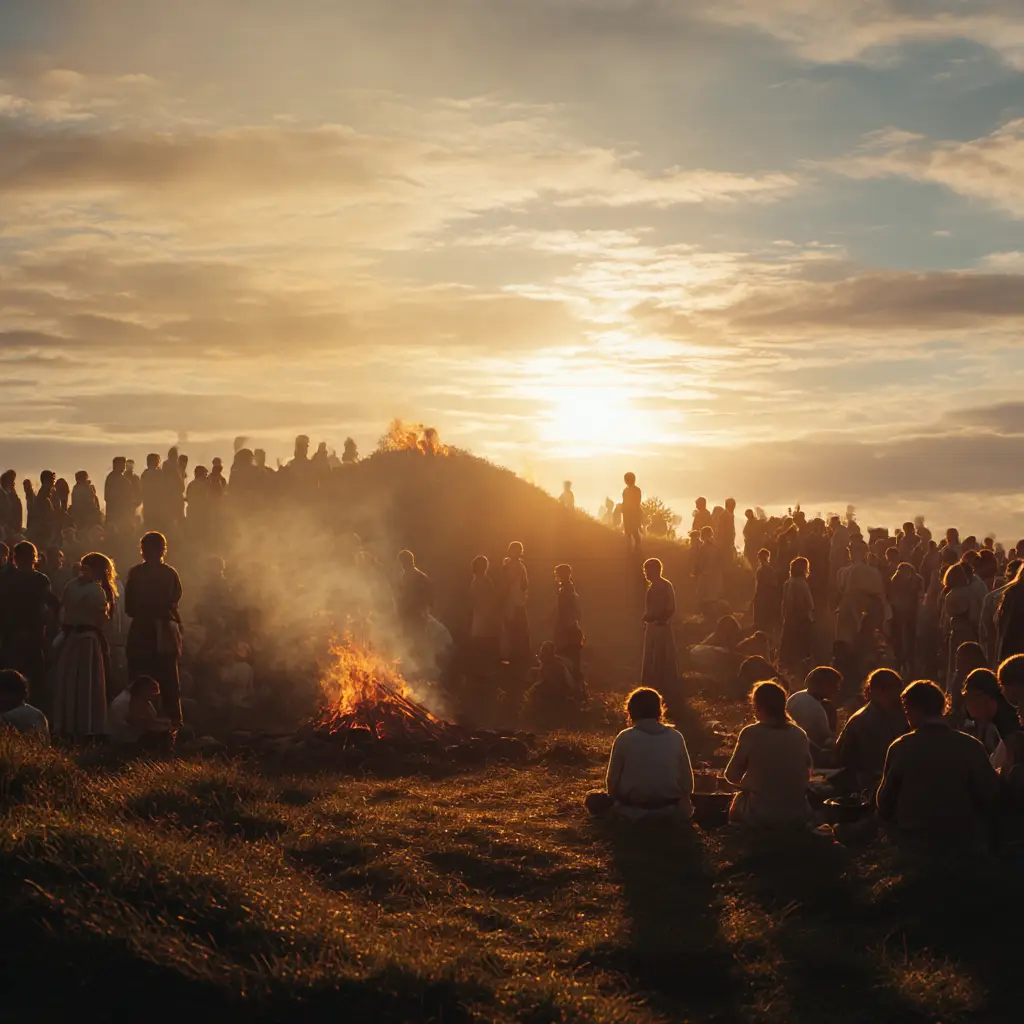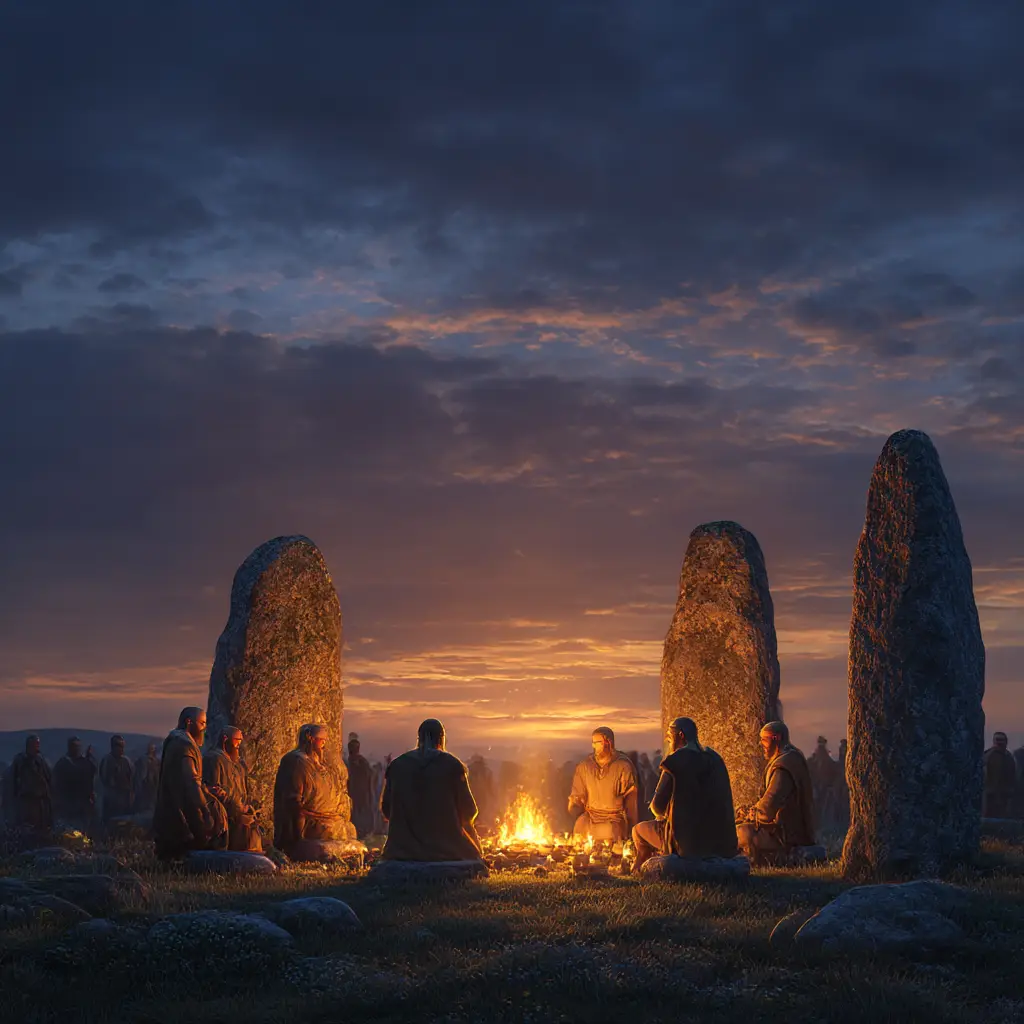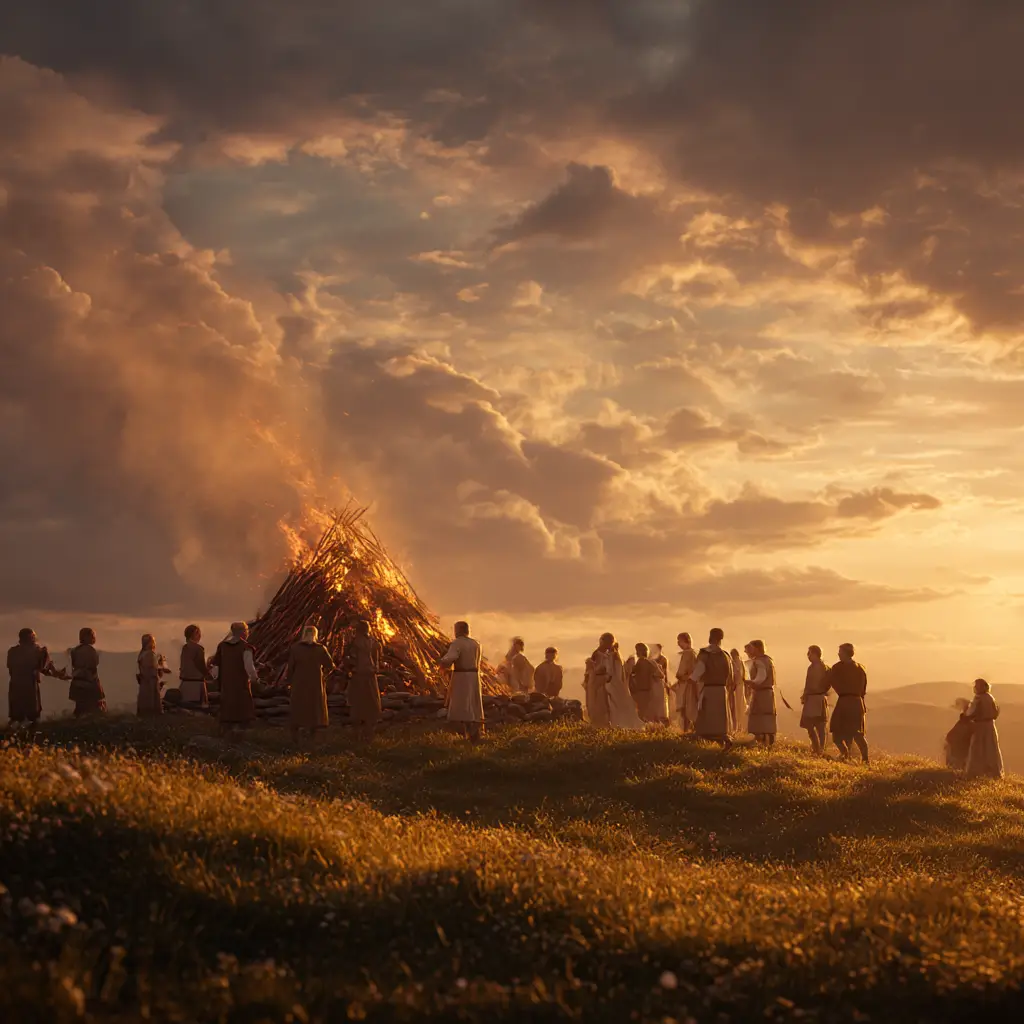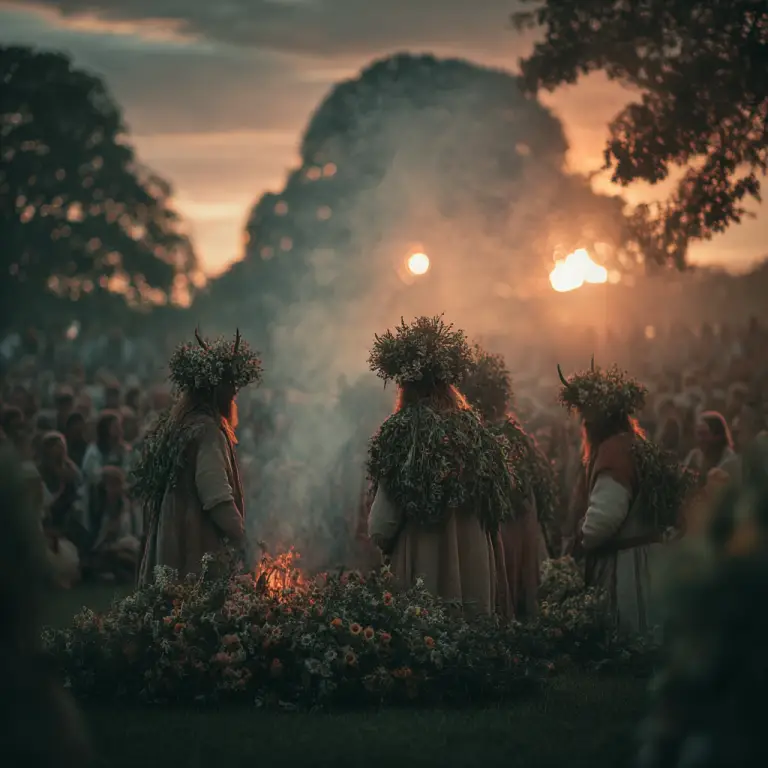Viking Midsummer – A Celebration of Light and Life
In Viking Age Scandinavia, Midsummer was one of the most significant seasonal festivals, deeply rooted in Norse pagan beliefs and agrarian life. Known as a time of fertility, sunlight, and sacred rituals, the Midsummer celebration marked the summer solstice – the longest day of the year. Though not described in great detail in surviving Norse texts, archaeological finds, historical accounts, and later Scandinavian traditions provide insight into how the Norse may have honoured this powerful moment in the seasonal calendar.
The Importance of the Solstice
The summer solstice occurs around 21st June in the Northern Hemisphere and would have been especially meaningful in the far north, where the days grow incredibly long. For the Norse, the sun was not only a vital force for agriculture but also a powerful spiritual symbol. The solstice signalled the peak of sunlight and was likely celebrated as a time of abundance, good fortune, and connection to the divine forces of nature.
Pagan Roots and the Cycle of the Year
Viking belief systems were closely tied to nature and the turning of the seasons. Midsummer likely played a role in fertility rites, agricultural blessings, and the honouring of gods associated with growth and vitality, such as Freyr, the god of fertility and the harvest, and Sól, the sun goddess. Rituals may have been performed to ensure good crops, the health of livestock, and the protection of the community.
Customs and Celebrations
While no single written account of a Viking Midsummer survives, historians believe it would have included several key elements:
Bonfires – Large fires were lit on hilltops or by the sea, symbolising the power of the sun and offering protection against malevolent spirits. Fire was also a purifier, warding off darkness and disease.
Feasting and Drinking – As with many Viking festivals, food and drink played a central role. Mead, ale, and roasted meats would have been enjoyed in great quantity, accompanied by storytelling, music, and dancing.
Gatherings and Community – Midsummer was likely a communal event, bringing together extended families and neighbouring settlements. It was a time for matchmaking, oath-swearing, and solidifying alliances.
Offerings and Sacrifices – Sacrifices to the gods or land-spirits (landvættir) may have been made, including animal offerings or symbolic gifts, to give thanks for the past harvests and to seek favour for the season ahead.
Sacred Sites and Stones – Ceremonies may have taken place at stone circles, burial mounds, or natural landmarks believed to hold spiritual power. Sunlight alignment with ancient monuments suggests a longstanding connection to solstice worship in northern Europe.
Midsummer and Norse Mythology
In mythological terms, Midsummer was a time when the boundaries between worlds were thin. The spirits of nature, the ancestors, and even the gods themselves were thought to be closer to the realm of the living. This liminal period was ideal for divination, healing rituals, and spiritual reflection.
Lasting Legacy
Although the spread of Christianity in the late Viking Age gradually replaced pagan festivals with Christian ones, many Midsummer customs endured in rural Scandinavia. Modern Midsummer celebrations in Sweden, Norway, Denmark, and Iceland still reflect echoes of ancient Viking practices, particularly in the use of bonfires, maypoles, and solstice gatherings.
Viking Midsummer was more than a seasonal milestone; it was a sacred celebration of life, light, and the forces that sustained the Norse world. Even today, the spirit of Midsummer continues to shine through in Northern European culture, carrying forward the legacy of the sun-worshipping seafarers of the north.



